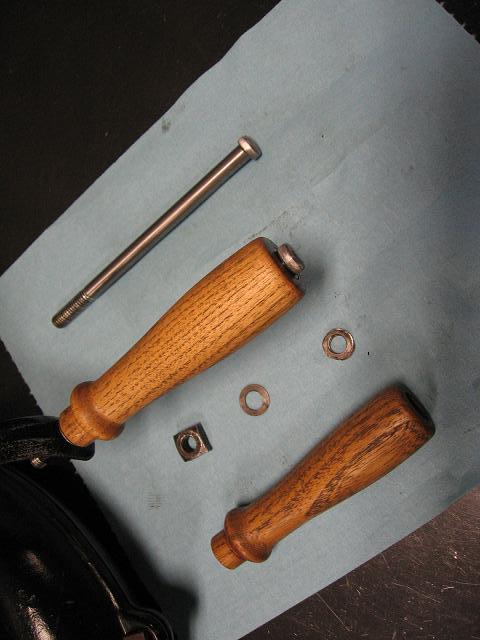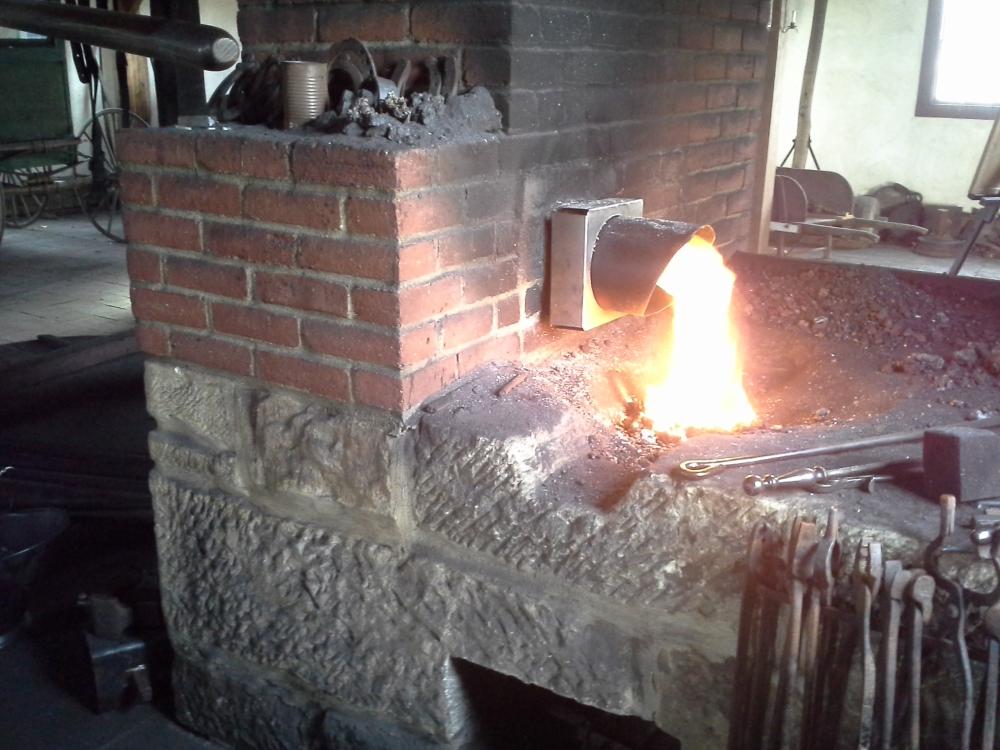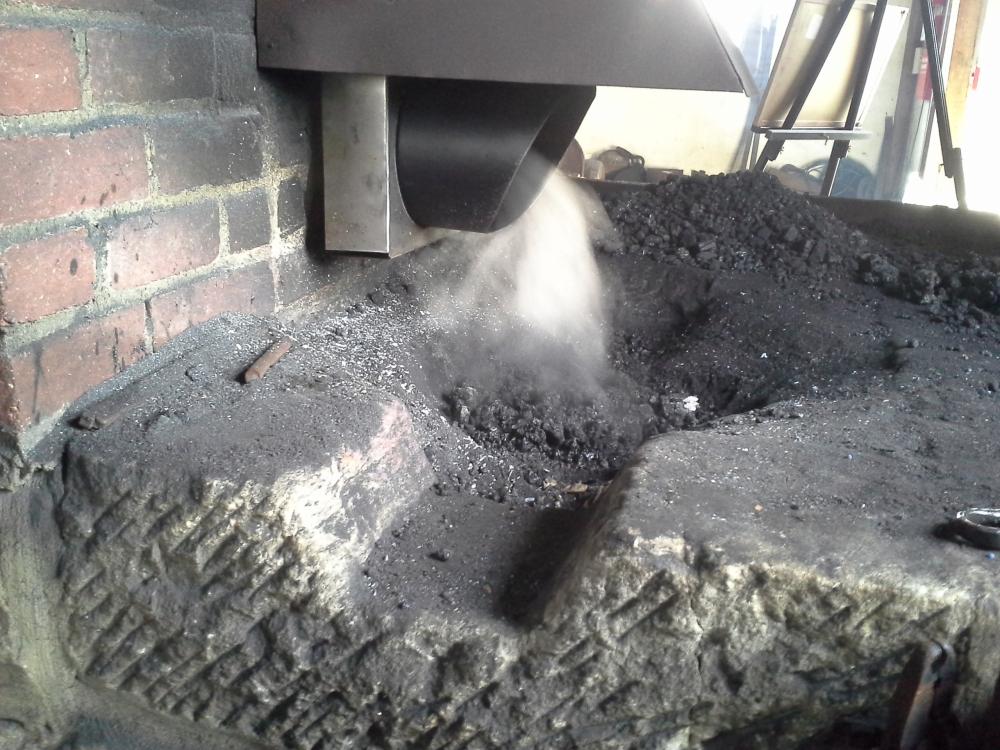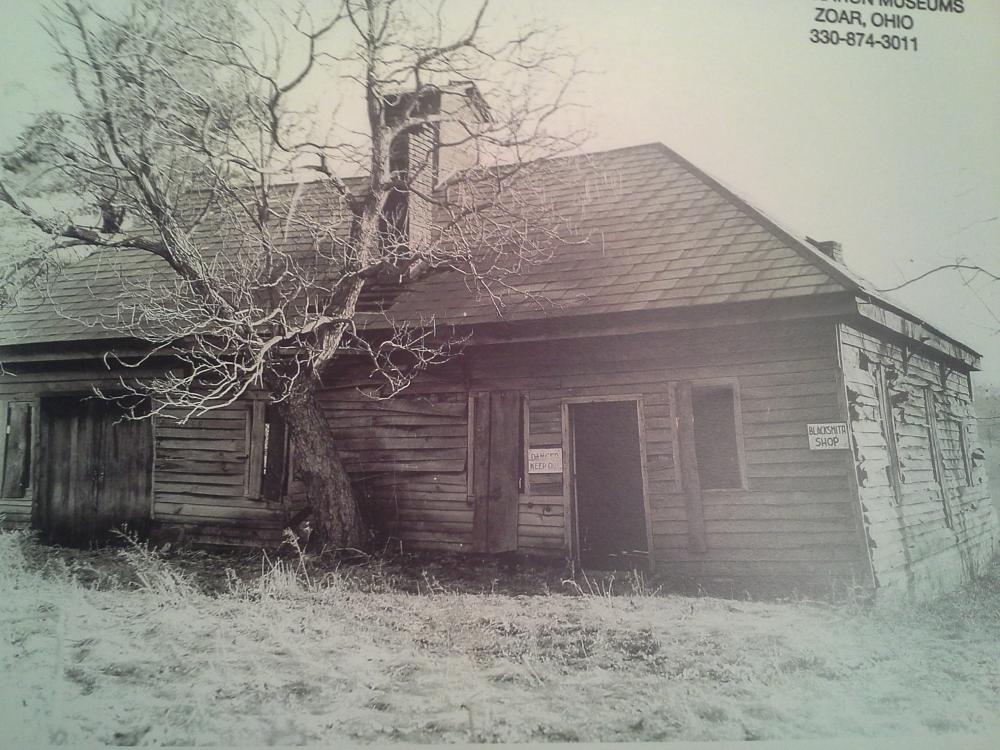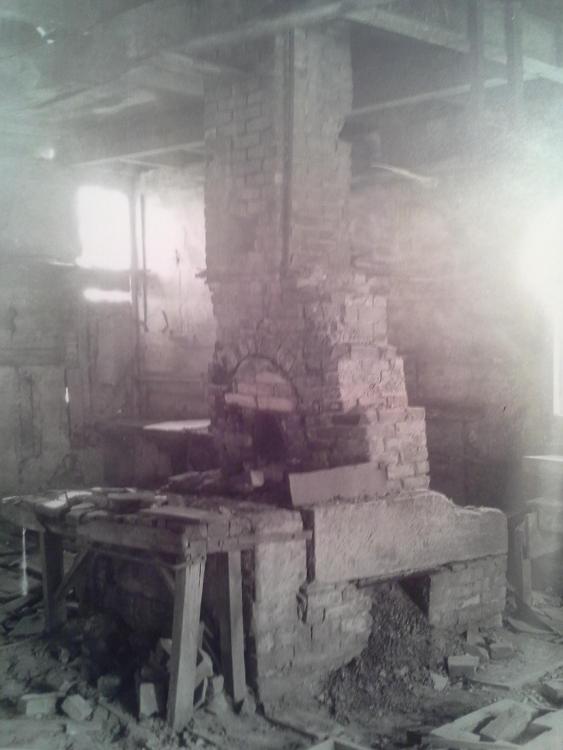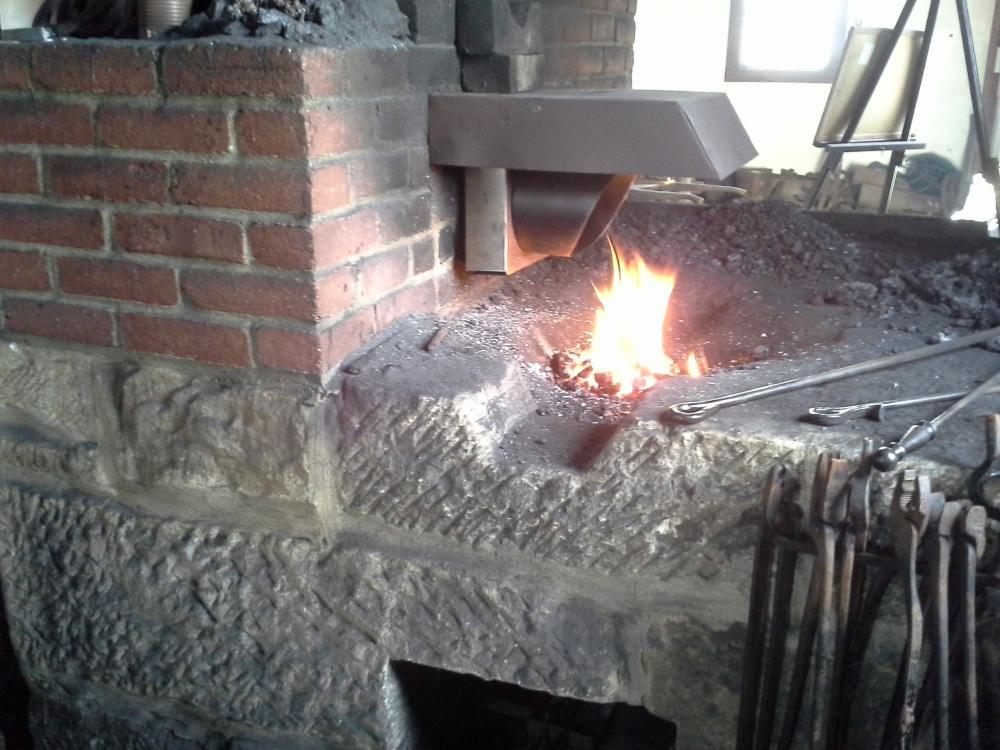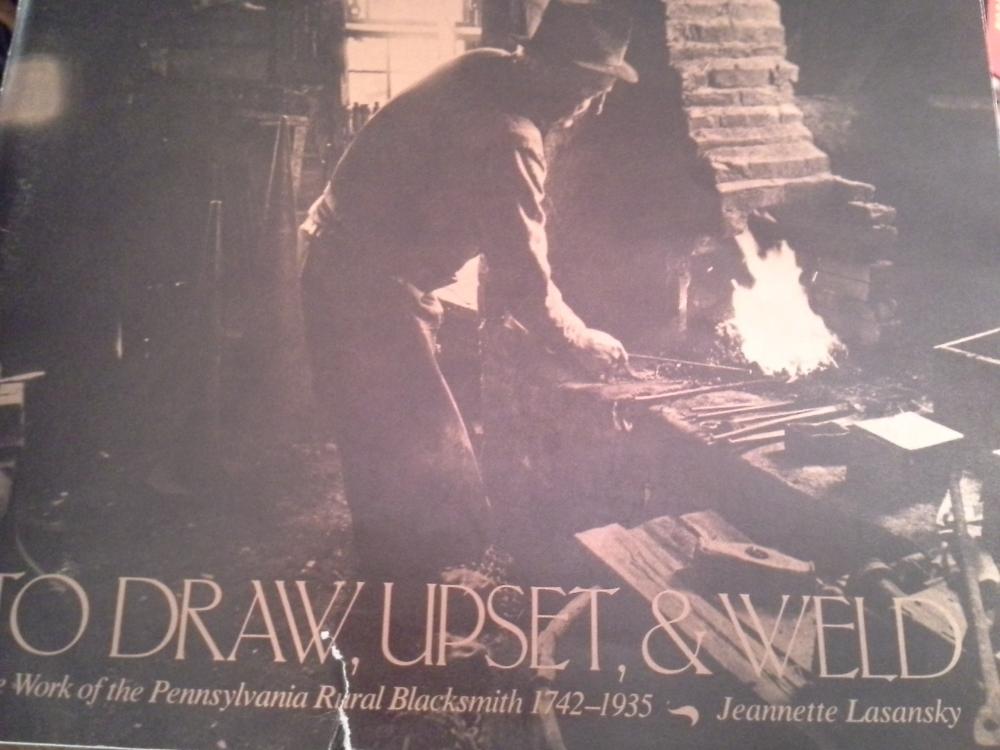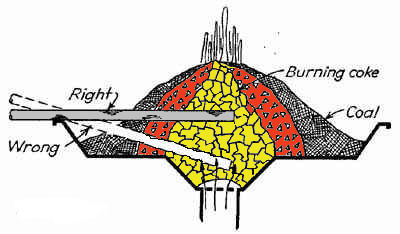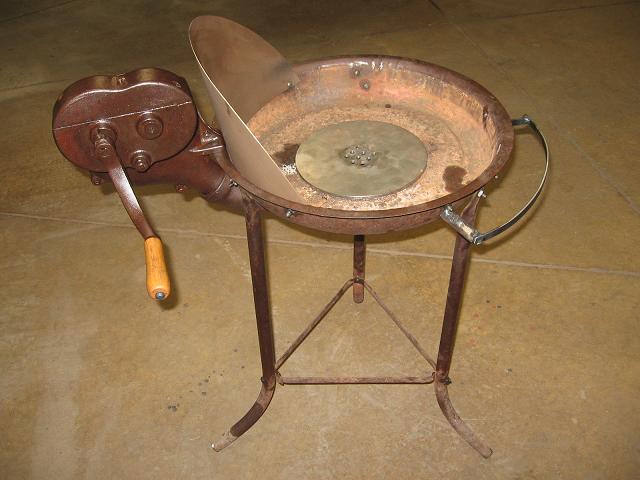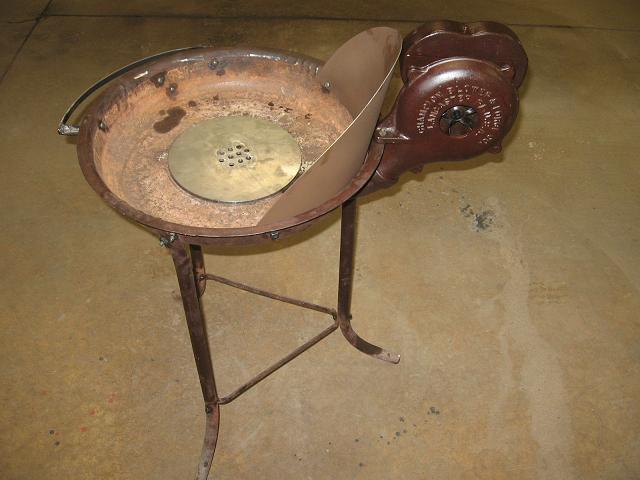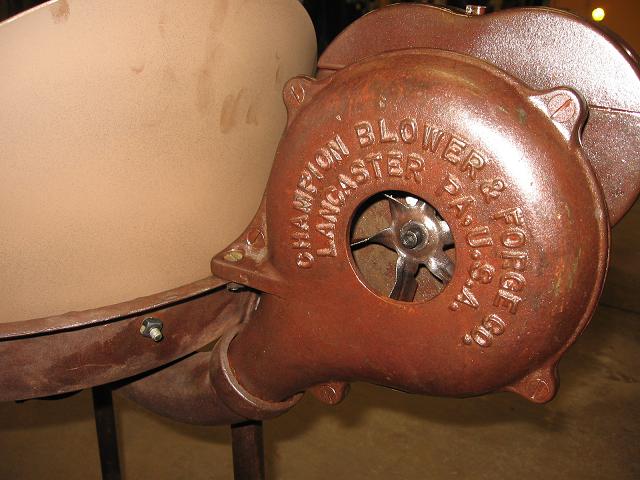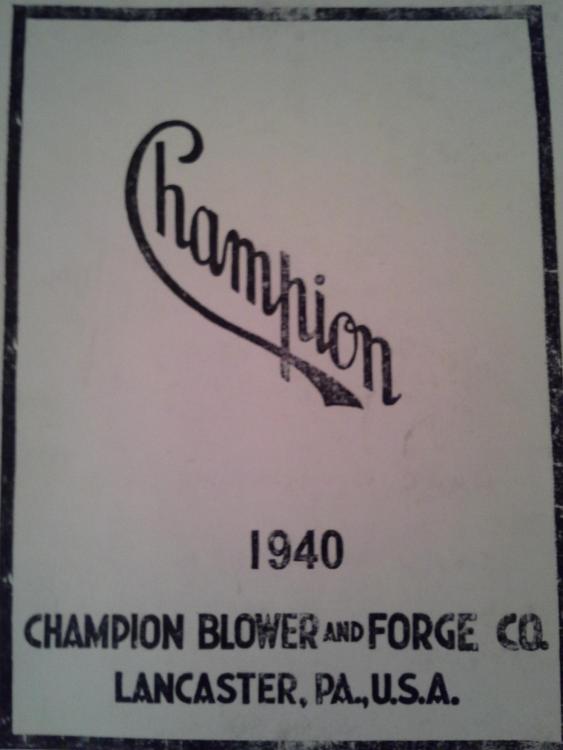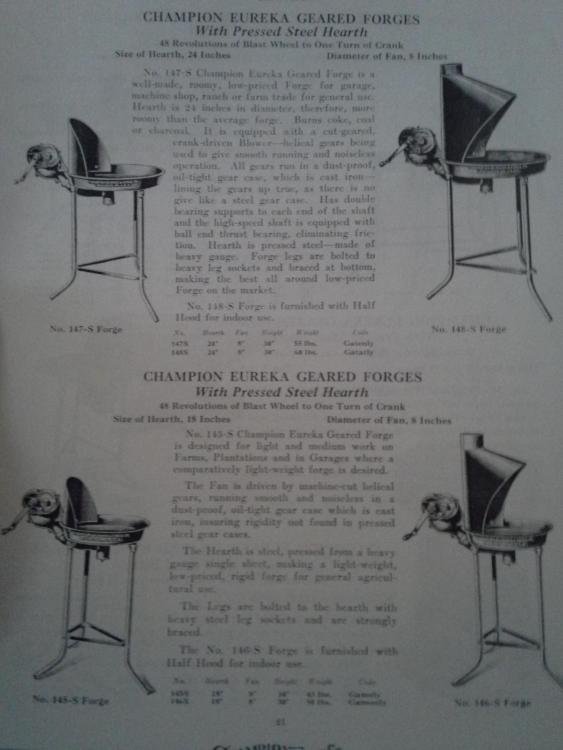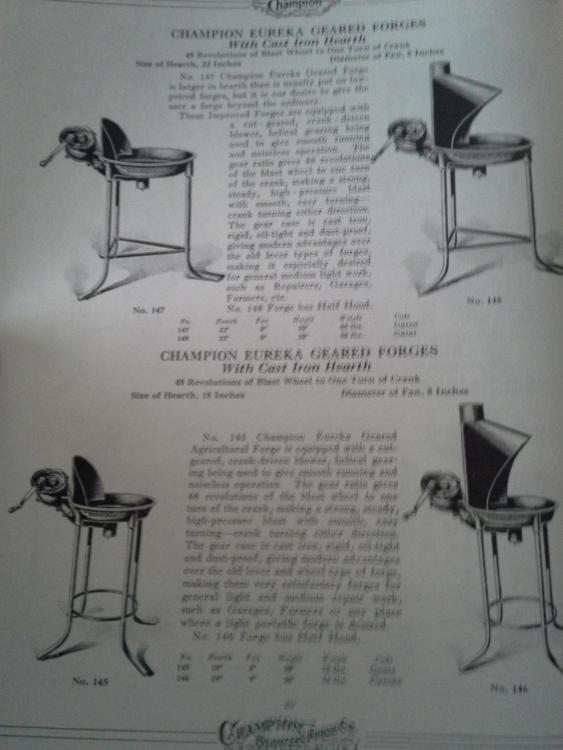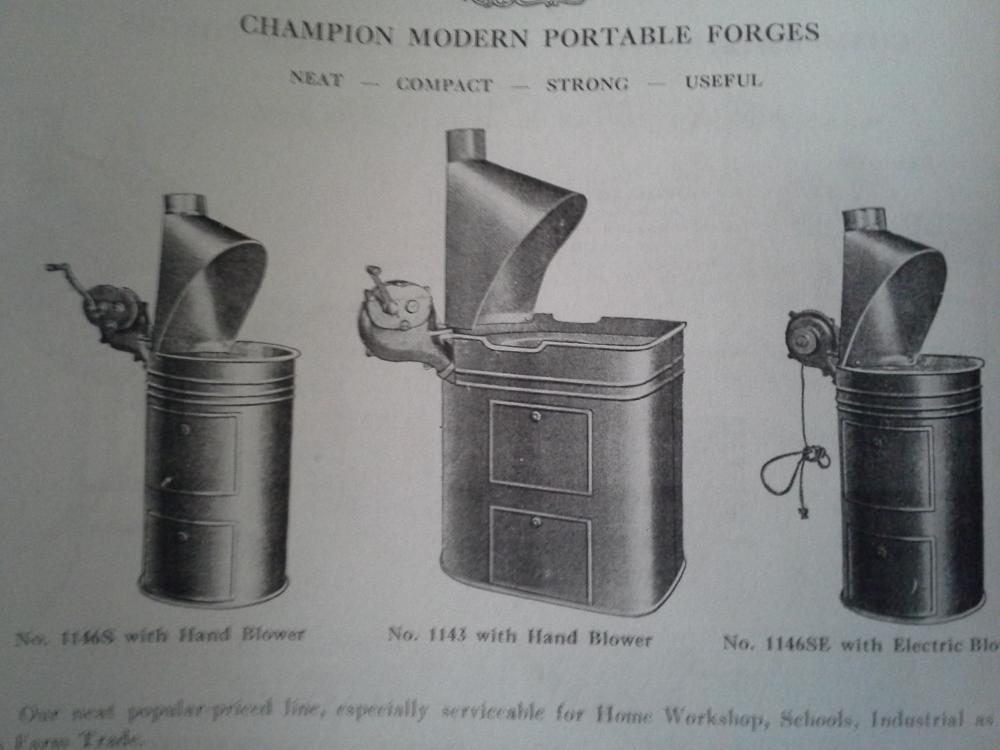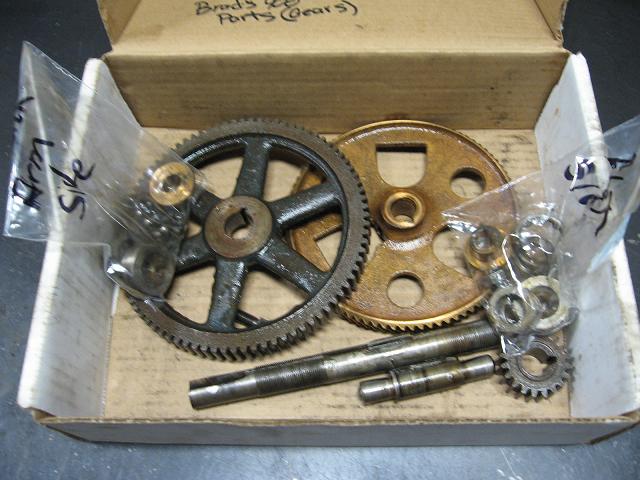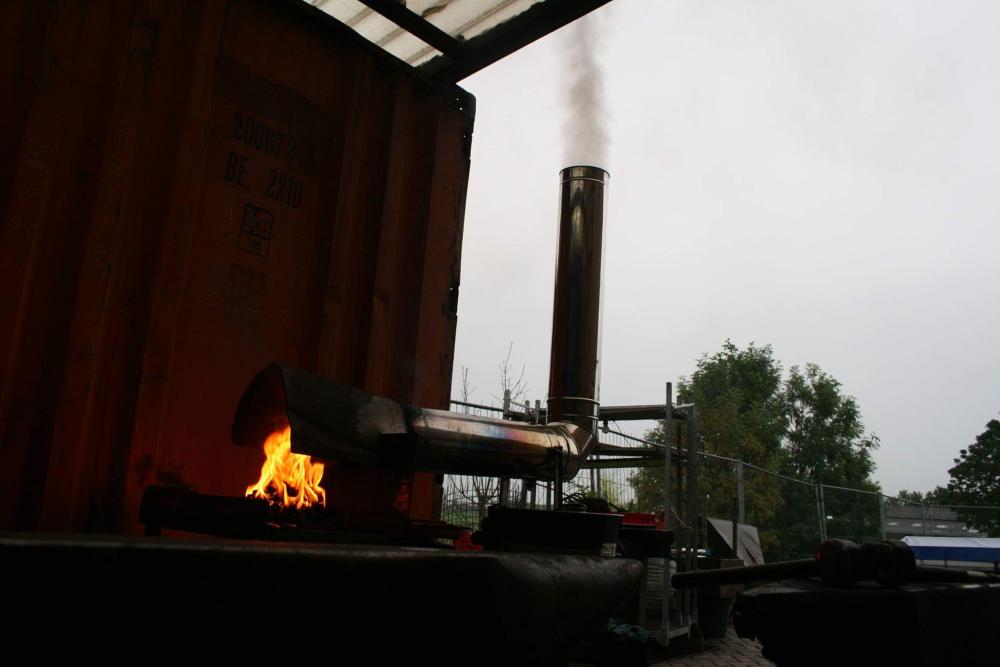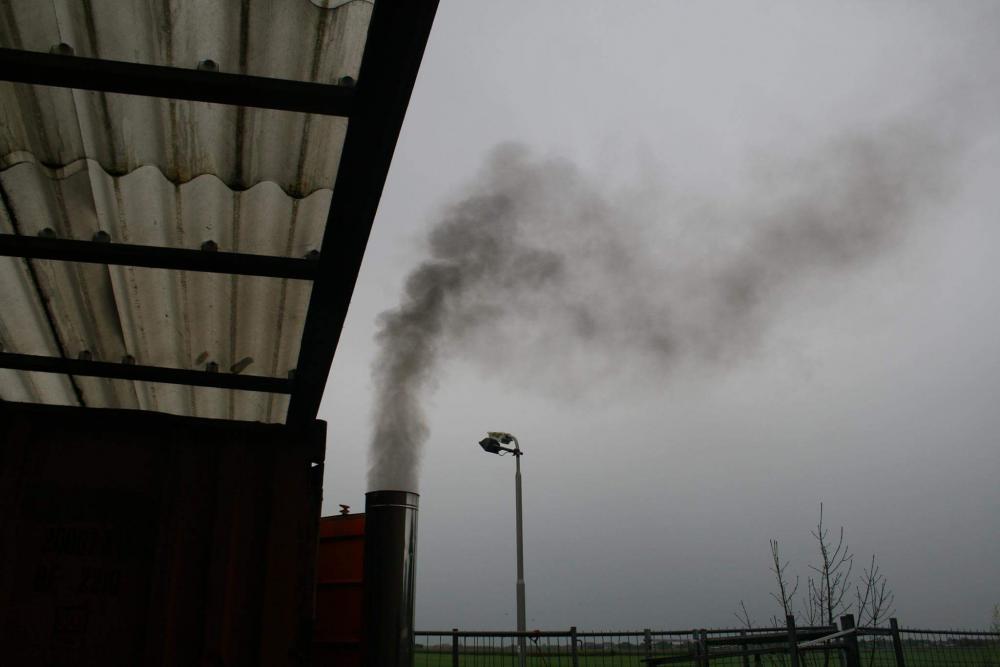-
Posts
1,227 -
Joined
-
Last visited
Content Type
Profiles
Forums
Articles
Gallery
Downloads
Events
Everything posted by SReynolds
-
-
with that particular forge I fill the entire pan with coal. In fact, some years ago, I added a sheet metal hoop around the inside and fastened it to the sides of the original to make it 3 inches taller. Gives a nice deep fire. (6 inches I'd say) I have cut-outs opposite one another to allow long sections to pass through. if your thinking the entire forge will become engulfed in flames, it don't, just the center of the forge has the coke fire-ball.
-
I don't know. It just does. I don't think about it. Like riding a bike or playing guitar. It just happens. I guess if I had to describe it; fuel management equates to fire management. You need the air to make the fire hot. So I guess I use fuel to manage the size of fire. I'm guessing here. I do not use water to manage the fire in the brick and stone forge. I have. But soon realized it isn't necessary. The water helps control the size of fire by wetting the coal that was transformed into coke. Keep it wet; it wont burn. Maybe I'm such a wizard at this it just happens for me. I really don't know. A quality tuyere plate or clinker breaker? Don't know. I was told you want the coal surrounding the fire wet. It obviously is a wives tale like the old blacksmith books say you can't weld with clinker in the fire and all work must be scarfed. And fluxed. That is obviously a lie but it's in print. In well known/popular smithing books. Don't believe everything you read. Find out for yourself.
-
Much less. Hense the trouble of coke ovens prior to shipping via rail. I would never control a steel or iron forge fire with water as it can damage the forge not to mention it produces sulfuric acid. But it is yours and you are welcome to forge anyway you like.
-
Installed an extension of my flue tile to assist drawing in more heat, thus smoke. Not 100% sure it makes a huge difference but know it did something. The upper shield is to catch the fly ash from going skyward and dropping on my head and shoulders.
-
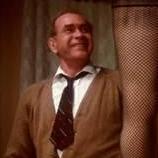
1750's Blacksmith Forge Restoration
SReynolds replied to Richard Tuesday Williams's topic in Solid Fuel Forges
Pics of the original shop and forge where I work and new forge. Original is built 1841 if I remember. -

1750's Blacksmith Forge Restoration
SReynolds replied to Richard Tuesday Williams's topic in Solid Fuel Forges
The bellows are mounted on floor just behind chimney. You can see a small portion of the top at the smith's waist. -
I do fill it full. As in; full. So I have depth to the fire. It moves so much air, the blast is incredibly easy to hear. Thus the air moving into the fire is unimpeded. The air pipe has no restrictions. The bottom of the tuyere has a tight clean-out flap. The holes in the tuyere plate must be kept clear. They plug with clinker as the coal ( coke obviously) is consumed. You need quality coal (intended for smithing) and a fire tool to poke through the holes and clear them when the blast weakens. If the holes are too small, they plug quicker. If the coal is low quality (not intended for smithing) they plug quicker. These are small forges and are not best for all around smithing. They are intended to heat short rounds known as rivets. Yes, they can he used to make horse shoes and decorative items etc. But remember; no fire pot. You must heap the COKE up high in the center and surround that with a deposit of green coal to retain the coke in a heap. keep the green coal at bay where you slide the work into the mound of burning coke as well as opposite of that if the work must PASS THROUGH the fire like a three foot long fire poker etc. You cannot have green coal touching the workpiece. It makes a mess of coal tar sticking onto it. Not ideal. But doable if you can work with the idiosyncrasies.
-
I caught site of a piece of a rivet forge at QUAD STATE and I obviously knew what it was. So I had to ask what the asking price is and I was informed "twotwentyfive" I had to ask "dollars?"
-
Far and away more than that in ohio. Typical worn out rivet forge is 300.00 and old rusty near junk tongs are 15.oo/20.oo unless you go to a farm auction and get lucky.
-
Asking 700.00 for one at local farrier supply store. Everyone is in on the blacksmith bandwagon. Years ago it would be virtually worthless.
-
-
Somewhat I'd say. That is the "normal" method. Your coke fire would be heaped up higher. As your picture fire is only as deep as the firepot. It would be banked higher than that. Then the work is placed horizontally into the fire. The work will not be placed "down into the fire pot" so much. It is above it. So, the fire must be higher than fire pot. So your question is; what is the fire pot for? It holds the fire but you dont really want to use that part of it as it is laced full of oxygen. The firepot will also allow you to walk away from the fire for a time with out it going out. It holds the fire. Some will say to never walk away from the forge fire. Ok. But what does it do when I'm not there that it won't do when I am? I like not having the fire go out in ten-fifteen minutes when I have to walk across the street. I cover it with green coal and it keeps.
-
I have read enough about that method that it seems somewhat popular. And I use soft coal as opposed to hard coal or industrial coke etc. So I tried it. Basically, I buid the same fire but when it is underway ( the coke is burning well) I cover it with green coal and this makes the top of the said "oven". It cokes over and have this hard shell. So all is well and good? Hardly. When I begin to use it I have to push air into the fire pot with my crank blower.. . . . . .where does the hot blast escape? Directly at me. And if I have to actually employ tongs to work my workpiece into/out of and rotate it (which many of us use tongs) I have to wear a Kevlar gauntlet/glove to prevent third degree burns on my arm. So......obviously I do it wrong. I think you are supposed to ......well honestly. ....I don't know what else you'd do in that case. Seems quite silly to me. To the point of; "I'll post this crazy insane method of a forge fire and see who I can get to actually try this out" So no. I don't have patience for that.
-
It will not have the letter S cast into the pipe under the pan. That pipe assembly is used on cast iron and the pressed steel pan. Yours looks like steel. Protecting the steel pan with something isn't a bad idea. I know some who do not but I would and do on my old champion (steel) forges. I use a1/4" thick steel plate. I do use a cast iron forge and do not have clay as the guy I bought it from did not use clay. It has been used hard by him and myself with no clay. However it is a newer forge and not an antique. The firepot and surrounding table is cast iron . Come to think of it, I believe the old champion forges have firepots made of cast iron. No? Just says "Tuyere Iron" in the ads. So why is the firepot tuyere iron up to the challenge but the cast pan surrounding the fire (no fire contact) isn't? sounds like bunk. Maybe somebody at champion blower and forge was smoking something. Nonetheless. You dont have a fire pot. Your fire sets direct on the pan.
-
Yes sir. If your is cast with 145 on the pipe then it is 145-18. The 18 is, of course, the pan size. S = steel (pan) Model 145 (no S) is cast iron pan These are late model units. Not 1880 or nothing like that. 1930 era (?) Not sure when the bagan these, but must have been the 30's as they are advadvertised in 1940 catalog
-
Check these out. To answer your question; size of pan. How about that retro look with the sheet steel cabinet, huh? I kill for that.
-
Yes. I have several. However it is on my computer at the school and we have the weekend off including Monday for MLK jr. Tuesday if I remember. I will add that mine is still the original red. Well......not the pan! I brought it to the school this winter as the (blacksmith) shop is closed. I fire it up in the shop with the door open and folks come by and watch me. They always mention how they love the smell of coal and ask to crank the blower. The wood shop made me a new oak handle.
-
You are obviously correct. It is what it says. No secret there. It is the model 140 EUREKA blower. No clay. I use mine all the time. But did make a false bottom for mine with 1/4" plate. I removed the tuyere plate and made a new one , incorporating the tuyere into that plate. It will destroy steel. It goes to welding heat in no time. Be careful. My students dont take it seriously because of its size and get careless.
-

Has anyone successfully made a teliscopic hood?
SReynolds replied to setlab's topic in Chimneys, Hoods, and Stacks
There is one advertised in the champion catalog. Make one like that. Cast iron ring counterweight -

how can i reduce the clanking coming from my blowers gears?
SReynolds replied to SergeySindri's topic in Bellows, Blowers
Usually the bearings are shot aka rusty and or worn out. The gears can also be chipped which makes a noise. Take it apart like this and look it over after you clean it real well. The bearings themselves are not replaceable. You CAN replace the balls but not the cones and race. -
A online blacksmithing site offers three different hoods. But they are all intended for 8" flue pipe. I guess if I had an actual question, I would ask why a manufacturer of forges and tools uses 8" flue pipe when the consensus is that is too small. Who is right?
-

Side draft hood not working properly
SReynolds replied to Morten311's topic in Chimneys, Hoods, and Stacks
This obviously works very very well. 8" pipe. 3' horizontally and 3' vertical. It doesn't extend verticlally far above and beyond anything as suggested. -

Anvil ID - colonial pattern
SReynolds replied to Couchsachraga's topic in Anvils, Swage Blocks, and Mandrels
Folk say the Hay Budden is at the top tier but the rebound on my old mouse is far better than my HB

